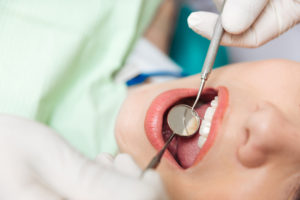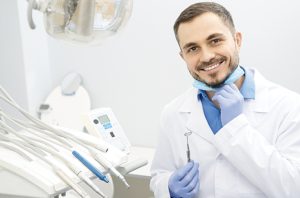Prosthodontics allow for the rehabilitation of defective maxillofacial structures. Choosing the right prosthodontist increases patients’ satisfaction.
People lose their teeth or oral structures because of various reasons: natural aging, a health defect at birth, diseases and infections, and serious accident. They lose their ability to smile and chew food because these activities cause them pain and trauma. In other circumstances, it might lead to extreme issues, such as anxiety and depression. Low self-esteem is also common among persons with maxillofacial defects, as one feels embarrassed meeting other people. Prosthodontics is a surefire means of restoring your oral function. It is also a cosmetic treatment that enhances your dental appearance, improving your smile and confidence.
The American College of Prosthodontists estimates that approximately 178 million Americans are missing a single tooth. Additionally, 40 million United States citizens are missing all their teeth. Aging is also contributing factor to teeth loss, as 30 percent of individuals aged 65-74 years do not have their natural teeth.
What is prosthodontics?
To simply understand prosthodontics, think of it as dental prosthetics. It is a branch in dentistry that deals with the diagnosis, treatment, rehabilitation, and care of malformed maxillary and facial structures to upgrade their function and aesthetics. It involves replacing lost teeth and other oral parts, such as bone, gum, ad facial structures, using artificial parts called dental implants.
A typical dentist might provide small prosthodontics procedures, but a prosthodontist is specialized in prosthodontics care. Once they clear dental school, a prosthodontist undergoes a three-year education program in the field. They learn how to replace missing teeth and related jaw structures with dentures, bridges, and prostheses.
Common Risk Factors for Tooth Loss
While the risk factors for teeth loss, such as age and gender, are beyond human control, others are entirely up to you. For instance, whether you brush your teeth or smoke are decisions that one has to make. It would be best to understand the causes of tooth loss to better care for your dental/oral health.
Dental Periodontitis
Also known as gum disease, dental periodontitis is an infection of the gum that causes damage to the soft tissues. If left untreated, it weakens the bone supporting the teeth and causes them to shift. Eventually, the tooth comes out.
Some common signs and symptoms of dental periodontitis are swollen gums, bad breath, bright red or purplish gums, pain when chewing, and pus oozing from the infected tissue. Although common and treatable, periodontitis is a preventable condition. Brushing the teeth in the morning and evening, flossing daily, and scheduling regular dental check-ups are practical ways of preventing bacteria build-up in the gums. Even so, the number of Americans adhering to home dental care plans remains low—only 13.5 percent of the population flosses every day.
What Causes Periodontitis
In its early development stages, periodontitis starts as plaque, a dense, sticky substance comprising pathogens. If no dental care is sought, the plaque affects various oral parts, eventually resulting in periodontitis. It undergoes the following stages.
- Plaque on the teeth – This occurs when starch and sugar mix with bacteria lodged in the mouth. Plaque forms quickly on the teeth. Cleaning and flossing the teeth daily removes keeps plaque away.
- Tartar under the gums – If you don’t brush your teeth [to remove plaque], it builds up under the gum, forming a hard substance called tartar or calculus. The longer you leave tartar untreated, the more damage it does. Brushing and flossing every day removes tartar gradually, but you need a professional dentist to remove it instantly.
Dangers of Plaque
Plaque causes a form of gum disease called gingivitis. It is characterized by inflammation and irritation of the soft gum tissue beneath the tooth (gingiva). You can treat gingivitis through professional dental care and simple home care routines.
Gingivitis can lead to further oral complications if an individual fails to seek proper care. The gum tissues’ continuous irritation and inflammation cause small spaces to develop between the gum and tooth. Tartar, plaque, and bacteria encroach into these pockets, causing the loss of gum tissue and bone. Due to that, one loses a tooth or teeth. In some chronic situations, it may also compromise your immune system.
Cavities
Cavities occur when sections of the tooth’s hard surface become permanently damaged, forming holes or small openings on a tooth’s surface. Also known as caries, cavities offer excellent lodges for bacteria and food substances. Failure to brush the teeth daily or adequately can lead to cavities. Children and young adults who love snacking and drinking sugary beverages are especially susceptible to getting caries.
If nothing is done to treat cavities, they grow deeper into the roots, affecting the tooth’s inner layers. That results in severe toothaches, bacterial infections, and tooth loss. The signs and symptoms of caries are toothaches, pains when chewing, brown/black staining on the tooth, and pits on the tooth surface (enamel).
Accidents
Oral injuries sustained after an accident can result in tooth loss. Sportsmen and athletes are often vulnerable to oral injuries, and that’s why they protect their teeth and gums using mouth guards. However, there are some measures you can take to prevent tooth loss through accidents. For example, it is not advisable to open bottle caps or lids, cut strings, or loosen knots using the teeth. It would also help avoid chewing ice or popcorn kernels if you want your teeth to remain intact.
Other risk factors
Besides the causes mentioned above of tooth loss, other factors can put you at risk of losing the teeth. They include:
- Smoking
- Poor diet and nutrition
- Arthritis
- Diabetes; and
- Hypertension
Understanding the Phases of Prosthodontics
Prosthodontists provide prosthodontics care in three phases:
- Fixed prosthodontics
- Removable prosthodontics; and
- Maxillofacial prosthodontics
Fixed Prosthodontics
This branch of dental prostheses involves replacing lost teeth by permanently cementing them in place as cast prosthesis. The restoration is done using bridges, dentures, veneers, onlays, and inlays. Prosthodontists make all these restoration parts in the lab using a model that simulates the human dental formula.
The prosthetic tooth/teeth are usually in single or multiple cast crowns that dental specialists join together to form fixed bridges and dentures. The prosthodontist prepares the tooth, makes an impression of the procedure, and then sends it to a lab with a companion prescription for fabrication.
The lab technician will then create the desired tooth according to the prescription’s details. The artificial tooth is then cemented to the mouth using different types of dental cements.
Cast crown
This is typically known as the “cap.” Prosthodontists use it to cover the tooth partially or completely, depending on the condition of the tooth. Dental professionals use different materials to make cast crowns. They include gold, silver, zinc, indium, palladium, copper, and ceramic compounds, such as zirconia.
Removable Prosthodontics
This field of dental prosthesis deals with artificial oral parts meant to replace missing teeth and soft tissues. They include dentures or bridges, and veneers.
Dentures and bridges
A denture is an oral restoration part for replacing missing teeth. Dentures can either be complete or partial. Prosthodontists use complete dentures when all of the teeth are missing after the gum tissue is starting to heal. Partial dentures are used when only several teeth are missing.
A partial denture is also referred to as a bridge. It features replacement teeth held in place with a pink-colored, gum-like synthetic material. It is built on a metal frame, supported by a fixed/prepared tooth on each end. The “bridge” fills the space left by the missing teeth. It also prevents teeth from shifting toward the open space. That limits an individual’s ability to chew food properly and brush the teeth effectively.
Maxillofacial Prosthodontics
Maxillofacial prosthodontics deals with the rehabilitation of defective facial and maxillary structures. It might be an acquired or congenital malformation. Congenital maxillofacial defects often occur on the cleft lip and palate. Acquired defects usually arise from health conditions, such as cancer of the face. Other neurological conditions like a stroke can also cause facial and oral defects.
A prosthodontist prepares a prosthesis used to reconstruct parts of the maxillary and facial defects. Mouth prosthetics include speech bulbs, palatal augmentation, obturators, and palatal lifts. Because this field is related to the face, a prosthodontist is also trained to prepare prostheses for the nose, eyes, ears, cheeks, and other parts of the body, including fingers, hands, and feet.
Prosthodontists are highly skilled dental doctors who are knowledgeable and experienced in handling complex oral and facial prosthodontics. They usually work in fellowship with other cosmetic surgeons, such as plastic surgeons, ENT surgeons, neurosurgeons, speech pathologists, and oncologists to deliver a multidisciplinary approach to rehabilitation and treatment. Their primary objective is to restore a patient’s quality of life and self-confidence.
Dental Implants
A dental implant is a metal substitute for the root of a tooth. It is a rigid and sturdy screw or cylinder that holds a denture or bridge in place. If well-executed, a dental implant can provide a rigid device used in maxillofacial prosthodontics.
Dental implants are done by competent prosthodontists who’ve acquired further education and practical training in advanced prosthodontics. The success of the procedure highly relies on the planning process and requires comprehensive coverage.
What to Expect During Implant Placement
Prosthodontists offer different types of dental implants with various times of procedures. Some take a day, others several days, and other months. During consultations, you and your dentist can discuss the timeframe of treatment. Generally, dental implants have three stages:
- Implant placement – In this process, the dentist carefully determines where they should place the implant. They use technologically-upgraded X-ray machines for enhanced accuracy. They then place the implant in the jawbone surgically. The process might cause swelling or tenderness on the surrounding gum tissue. That’s the reason most prosthodontists advise their patients to take tender foods for easy chewing.
- The recovery process – Dental implants maintain stability because they integrate into the jawbone. The bone continues to grow around the implant through osseointegration [which we’ll discuss later in this piece]. The process might take several months. The doctor will not place any replacement tooth unless the implant is fully integrated into the jawbone. That’s why most doctors prefer placing the implant and the replacement tooth at the same time. The healing process is the same.
- Placing the Prosthesis – If only a single tooth is missing, the prosthodontist will prepare a tailor-made crown that can integrally fit into your dental formula. If multiple teeth are missing, the dentist will consider placing implant-supported bridges custom-made to fit your mouth as your natural teeth would.
Creating replacement teeth takes time because they are made in labs according to a prosthodontist’s prescription. They will place a temporary denture or bridge as they wait for the complete prosthesis. A temporary bridge or denture will help you communicate effectively as you wait for the new crown.
Are You the Right Patient for Dental Implants?
Data by the American Academy of Implant Dentistry, posted on Reuters, indicated that approximately three million Americans have dental implants, with 500,000 implants placed every year. If you miss a tooth/teeth or have a malformed oral structure, you might be considering undergoing the surgical procedure of implant placement.
While dental implants are generally safe, they are not entirely risk-free. It is understandable to ask yourself whether a dental implant is best for you. In this section, we offer useful information to know whether you are the perfect candidate for surgical implant placement.
Generally, implant patients should be in good physical and mental health. They must have fully-developed jaws, sufficient bone quality and quantity (osseous bed) for stable implant placement, and efficient osseointegration. If the patient has osteoporotic bones, they might require a bone graft. Patient interviews and evaluation offer prosthodontics critical information about the patient’s medical history and the specific cause of tooth loss or oral malformation.
Suitable implant patients must also express a high degree of oral hygiene to ensure that they take care of their dental prostheses. That includes brushing the teeth twice a day and flossing once daily. They must also have scheduled appointments with a qualified dentist for regular check-ups.
To determine whether you are a suitable candidate for dental implants, a prosthodontist will conduct a clinical examination of your oral cavity. High-tech devices, such as magnetic resonance imaging (MRI) and computer tomography (CT), are used to create 2D images that help prosthodontists gather the critical information needed for implant placement. For instance, bone loss, location of nerves, and sinus assessment.
Health Problems that Might Pose a Challenge
As stated earlier, taking a patient’s medical report is an integral part of the diagnosis stage. The doctor has to take note of any pre-existing health condition because it might affect osseointegration and the efficiency of the healing process. Some medical conditions that may rule you out from having dental implants include:
- Immuno-deficiency issues
- Cancer
- Uncontrolled diabetes
- Alcoholism
- Uncontrolled periodontitis
- Hemophilia
It is critical to note that you might still be a suitable implant patient with a medical condition. It only depends on the severity of the health complication. Your prosthodontist will have to assess the situation and work with your physician to get the condition under control before planning the treatment process.
Apart from medical conditions, other factors that might compromise your suitability for dental implants include:
- Pregnancy – The American Pregnancy Association found out that dental implants can cause high-stress levels among expectant mothers, affecting the proper development of the baby. A surgical procedure will increase anxiety levels, and that worsens the situation.
- If you are undergoing treatment involving steroids and medications that suppress the body’s immune system, having an implant might pose serious health risks.
- Heavy smokers might not qualify for dental implant placement because smoking limits proper healing and osseointegration. The likelihood of a satisfactory outcome is low.
- You are undergoing radiotherapy on the neck or head.
Diagnosing and Planning for Prosthodontics Treatment
Proper diagnosis and planning for prosthodontics treatment are critical for the desired outcomes. Understanding the process is essential so that you know what to expect during treatment. The information will also enable you to ask questions for clarification.
Patient Interview and Evaluation
A patient examination is the most critical part of the diagnosis and treatment-planning process. During the evaluation, a prosthodontist tries to understand the patient: Why do they want the procedure? What are their needs? Are they functional or aesthetics needs? Without a proper understanding of the patient, the doctor cannot diagnose or create the best treatment plan for the patient. By interacting with the patient, a prosthodontist creates an avenue for knowing the root cause of the problem, critical in diagnostics. It also creates a close doctor-patient connection.
The first step of the patient examination process is to establish whether there is any existing health condition. If so, it should be treated before anything else, as it might also affect their oral health. Some oral conditions might require specialized treatment, depending on the patient’s needs. For instance, carious lesions on the tooth will require removing the plaque to determine the extent of tooth damage. Additionally, the periodontal disease requires the doctor to check the remaining teeth’ viability before rehabilitation and replacement.
The next step is to find the connection between the patient’s complaints and what is seen in the mouth. A professional prosthodontist will only treat the dental problem if they find a correlation between the patient’s examination and clinical observations.
Choosing the Right Treatment Plan
The medical report obtained from the clinical evidence gathered from various tests is studied, and a diagnosis is made. The following step is to find the right treatment plan and weigh the costs against the benefits of each therapeutic modality. With the right treatment, prosthodontics treatment should improve oral function, beautiful smile, and increased self-confidence.
Prosthodontics costs include financial and biological costs. The latter implies any adverse effects that might arise due to the treatment. Repeating many procedures on a single patient increases their chances of suffering other dental problems. Financial costs include the expenses of all the procedures performed during treatment.
The prosthodontist must also establish the time it will take to complete the treatment, including the number of visits. Patients want to know the time because of various reasons. To some, dental treatment usurps many hours that they might put on other important things. Others just don’t relish the time spent at ta dental office.
Nontreatment
Once a prosthodontist evaluates the different therapeutic modalities, they should also ask themselves if it is possible to go with a nontreatment plan. The doctor must also weigh the cost-to-benefit ratio of each treatment and the risk of nontreatment. Upon determination that the risks of nontreatment are insignificant, not providing treatment might help in that situation.
If there are no symptoms of dental disease, a prosthodontist is ethically mandated to offer all dental treatments. In that case, they must be watchful of any biological costs to ensure that they don’t affect the patient’s dental and overall health.
Retention of Maxillofacial Prostheses
Proper placement and achievement of high prosthesis retention remain a huge challenge to prosthodontists, primarily if it deals with an extensive defective area. That’s why they work as members of a multidisciplinary surgical team. Additionally, the advent of dental implants marked a new chapter in the field. It has increased the success rate of prosthodontics surgeries performed in the neck and had. This section offers critical insights into the role of dental implants in maxillofacial prosthodontics.
Traditionally, prosthodontists used medical adhesives to achieve proper retention of maxillofacial prostheses. The best adhesive provides reliable function by allowing maximum flexure even during facial expressions, speech, and contact with body moisture. Still, finding such medical adhesives is a challenge.
Alternatively, they might deploy different anatomical and mechanical techniques, such as using different artificial devices like springs, spectacles, magnets, or clips. For instance, retaining facial prostheses requires the cautious use of anatomic tissue undercuts that can withstand external displacement forces. Most patients report tissue irritation after undergoing surgeries involving tissue undercuts. Therefore, due care must be provided to the patient, most so on the part where the tissue was previously irradiated.
Changes in Cellular Activities during Osseointegration
It is critical to understand how dental implants integrate into the bone following successful implant placement. It follows the same healing process as a fractured bone, but in osseous healing, it depends on the implant’s nature. Once blood comes into contact with the implant surface, it adsorbs proteins that interact with the adsorbed protein to form a clot. The coagulant lodged on the surface of the implant offers a surface for the formation of new tissue.
During the process, there is the release of inflammatory signals that cause the aggregation of monocytes, neutrophils, and mesenchymal cells from the nearby capillaries to the implant’s surface. That initiates osteogenesis. Tissue-growth catalysts get activates within 24 hours of implant placement that signal the collection and differentiation of mesenchymal cells that play a critical role in weaving bone around the implant.
Implant Surface Modification
The modification technique used in creating implant surfaces highly influences implant retention in the jaw bone. Acid etching, grit- and sand-blasting are some of the common modification techniques used today. Most commercially marketed implants have been sand-blasted because they result in dental prostheses with an increased surface area. There is more space cell attachment with an expanded surface area, and hence, exponential tissue growth.
Chemical surface modification is also an alternative technique achieved through electrochemical anodization. The process increases the surface microtexture and changes the chemical composition of the implant’s outer layer. The chemical reaction produces a titanium oxide layer that is relatively thicker than other implant options.
Ceramic coating is another implant surface modification. The objective of adding a ceramic layer is to create a textured surface for faster osseointegration. Dental technicians perform the process by blasting the implant surface with hydroxyapatite (HA) in high temperatures. As the surface cools, it develops cracks that improve bone-to-implant contact. The only downside to this technique is that the resulting implant surface degrades unevenly in the long run.
Craniofacial Implants
Dental and cranial osseointegration follow different healing processes. Researchers had to find other surface protocols to be able to predict craniofacial osseointegration. The implants are screw-like, titanium alloys with threaded, machined surfaces. Additionally, the implant features a flange on the coronal part [a barrier that settles on the surface of the jaw after implant placement]. In a world where accidents lurk in every corner, prosthodontists have approved the technique as safe and secure. The flange prevents the longitudinal displacement of the implant, thereby protecting the deeper structure in the jaw. While many patients with rehabilitated craniofacial defects have reported several trauma cases, only a handful reported fractures to the skull. None of them has had severe effects.
Critical Factors that Impact Predictable Osseointegration
Six primary factors affect predictable osseointegration. Therefore, prosthodontists are often very vigilant about them to ensure the best rehabilitation and treatment outcomes.
Prosthesis material – Titanium alloys are the most popular material for maxillofacial prosthetics because they quickly integrate with bone without any side effects. The material also has a slow degradation process, which can remain integrated into the bone for many years. Additionally, it can be used as an anchorage for a wide range of prostheses.
Implant macrostructure – This implies the overall design and shape of the implant. Screw-shaped implants are the most common options as they provide robust stability than most conical-shaped counterparts. Most patients with conical-shaped implants have reported micromovements and limited osseointegration.
Implant microstructure – Implants manufactured during the Branemark era were smooth-surfaced as they underwent a machining process. However, when applied clinically, these implants had reduced osseointegration and low resorption. On the flip side, a highly textured surface has a high osseointegration rate. The only drawback is that secondary inflammation and resorption can reduce the lifespan of the implant.
The osseous bed – The condition of the bony bed into which the implant is placed has a significant impact on osseointegration. Senior citizens with osteoporotic bones exhibit reduced osseointegration. Patients undergoing radiotherapy or individuals who have suffered severe burns have low osseous quality. Therefore, they have a reduced capacity for osseointegration.
Surgical technique – During surgical implant placement, prosthodontists must exercise the utmost care. That must perform the procedure at slow speeds, use high-frequency rotational tools, and constant irrigation with cold water. They must maintain low temperatures because osteoblasts are highly sensitive to heat and might get damaged quickly. Additionally, no latex glove or gauze should come in contact with the implant. Foreign matter, such as powder and fiber, contaminate the bony bed, hindering osseointegration.
Implant placement – The implant is placed on the surgical bed along its long axis. Their positioning and stability are highly affected by lateral and torsional forces. That’s why prosthodontists take time to plan to most efficient and functional design before prescribing the final product to the dental technician.
Technological Trends in Maxillofacial Rehabilitation
Technological advancements in medicine have revolutionized prosthodontics techniques and procedures to enhance patient satisfaction. For instance, the use of Magnetic Resonance Imaging (MRI), Computer Tomography (CT), and Rapid Prototyping (RP) have taken prosthodontics from creating dental materials and sculpting using wax to creating 3D optical imaging with details about the defective oral or maxillary structure. To obtain these advanced images, prosthodontists use eye-friendly 3D laser scanners. The equipment is known to be non-invasive and has rapid data collection.
Using the data, prosthodontists can create 3D models, which they use to create maxillofacial prostheses virtually. The technology also allows them to compare the before-and-after situations because they can now obtain two 3D models of the defective part and another with the restored part. The 3D-printing process uses epoxy photopolymerizing resins. Finally, they can fabricate the final prosthesis using silicone rubber.
Other implant materials have grown in popularity, replacing metallic implants that have had harmful effects on patients. Researchers have found out that alloys, such as tantalum, zirconium, and magnesium, have more satisfying mechanical and biological characteristics.
Non-oxide ceramic surfaces like silicon carbide and silicon nitride are receiving high attention as they have a combination of properties that make them excellent implant materials. Most ceramic implants offer high corrosion, wear, fracture, and creep resistance. They also have higher hardness than aluminum implants.
The advent of nanotechnology and stem cell technology has drastically transformed the field of tissue engineering, an innovation poised to catalyze the next giant leap in maxillofacial rehabilitation. The technology has made it possible for the regeneration of skeletal tissue or whole parts, such as the nose and ears, literally grown and developed from the patient’s stem cells or cells acquired from a suitable donor. In the near future, prosthodontists manage the autologous reconstruction of malformed or missing body structures.
The Benefits of Working with a Prosthodontist
Partnering with a qualified prosthodontist guarantees the desired outcomes following a successful maxillofacial surgery. They are professional dentists who have undergone an additional three years to study prosthodontics. Therefore, they have an in-depth understanding of the field and the ingenuity to place oral and cranial prostheses.
They also use state-of-the-art technology to enhance accuracy, precision, and efficiency. Qualified prosthodontists are trained to use advanced technologies in various surgical procedures and techniques, which raises their success rates. The patient then feels confident, having received the expected aesthetics and function. Prosthodontists specialize in the replacement and rehabilitation of maxillofacial structures. They have in-depth knowledge about the various dynamics that support a beautiful smile and a healthy and functional mouth.
Professionals in prosthetic dentistry must ensure that an implant patient has the most efficient recovery without any adverse effects. That’s why they provide follow-up care after implant placement. They will prescribe the necessary medications and plan for visits to ensure that the prosthesis is functioning, feeling, and looking as it should. They know what needs to be done to maintain high oral hygiene and provide the support and tools to help you clean the implants for increased durability.
How to Choose the Right Prosthodontist
Because tooth replacement and oral rehabilitation are essential medical procedures, you need to find the right prosthodontist for your treatment. They have a different and more complicated job description than your typical dentist. A prosthodontist treats and covers defective maxillary structures and oral parts. Therefore, it is critical to find someone whom you are confident being under their care. Below are insights into how you can choose the right professional.
Check online reviews
An experienced prosthodontist must have provided surgical services to several patients. Hence, go online and read their consumer reviews. The more reviews you see, the better. Patient testimonials give one the real picture about the doctor and the services offered at the clinic because they are from people who had the first-hand experience with the prosthodontist.
Qualification and work experience
A cosmetic dentist is not a prosthodontist. Achieving board certification as a qualified prosthodontist requires years of academic education, training, and experience. A qualified prosthodontist must be certified by the American Board of Prosthodontists. That’s an indication that they obtained a dental degree and went through a three-year education and training course on prosthodontics.
To ensure that your prospective doctor holds accreditation, visit their health facility for an interview. You can then ask all questions you have to know how experienced they are in prosthodontics. If they claim to have worked with different clients, the chances are that they have photos showing satisfied clients with their implants on.
In addition to meeting all the board’s qualification requirements, certified prosthodontists must recertify every eight years. Such a policy ensures that practicing prosthodontists keep with the latest technological advancements and innovations in the field. You can verify your potential prosthodontist’s qualification on the American Board of Prosthodontics’ website.
Judgment-free and compassionate approach
You need to find a prosthodontist who possesses certain characteristics. These are things you can only learn about after meeting the prosthodontist. Once you set an appointment with them, assess their communication skills. They should be compassionate and non-judgmental when they talk to patients. Remember, maxillofacial rehabilitation and treatment can take several weeks or months. It means you will have several visits to the doctor during the recovery process. It is crucial to find a prosthodontist who you are comfortable working and talking to.
Essential Questions to Ask Your Prosthodontist during Your Appointment
Before deciding the best treatment plan for an implant patient, a prosthodontist must first meet the patient for an initial consultation or interview. You can take advantage of that time to ask the doctor important questions to determine whether they are the right health professional for your dental needs.
How will my smile look like?
Ensure that your prosthodontist explains the procedure and how it will affect your teeth, face, and jawline. Apart from their before-n-after image gallery, they should also offer an image or model illustrating the expected outcomes.
What insurance companies do you work with?
Most maxillofacial surgeries and oral restoration procedures are covered by dental insurance. Hence, it is critical to make sure that your prospective prosthodontist accepts settlements from your current insurer.
What after-care services will I need?
Many procedures involving dental implants and maxillofacial rehabilitation require follow-up care and other additional treatments. Every procedure has specific follow-up treatment, and it is critical to know what follow-up options are there for your specific surgery. Good prosthodontics will explain the entire treatment plan, from pre-procedure to post-procedure and prostheses maintenance.
What are the medical costs for my procedure?
Every patient has unique dental needs. The doctor will give you an estimate after interviewing and conducting an oral examination to determine what treatment modality is the best for you. They will then recommend the course of action based on your budget. It is also critical to ask about any costs that might arise from follow-up care and doctor’s appointments. Furthermore, know the treatment longevity to understand how long it will take for you to heal.
What are the potential side effects of my maxillofacial surgery?
Dental implants and maxillofacial surgeries are meant to enhance aesthetics and function, significantly affecting the patient’s quality of life. Like other complex medical procedures, prosthetic dentistry comes with several risks. A certified prosthodontist will take you through the benefits and side effects of each treatment option. That information will help you make an informed decision.
If you have a maxillofacial defect that has taken away your confidence and quality of life, contact {company name} today, and set an appointment with one of our professional prosthodontists. We promise to help you restore your oral and maxillofacial function, as well as aesthetics.
















